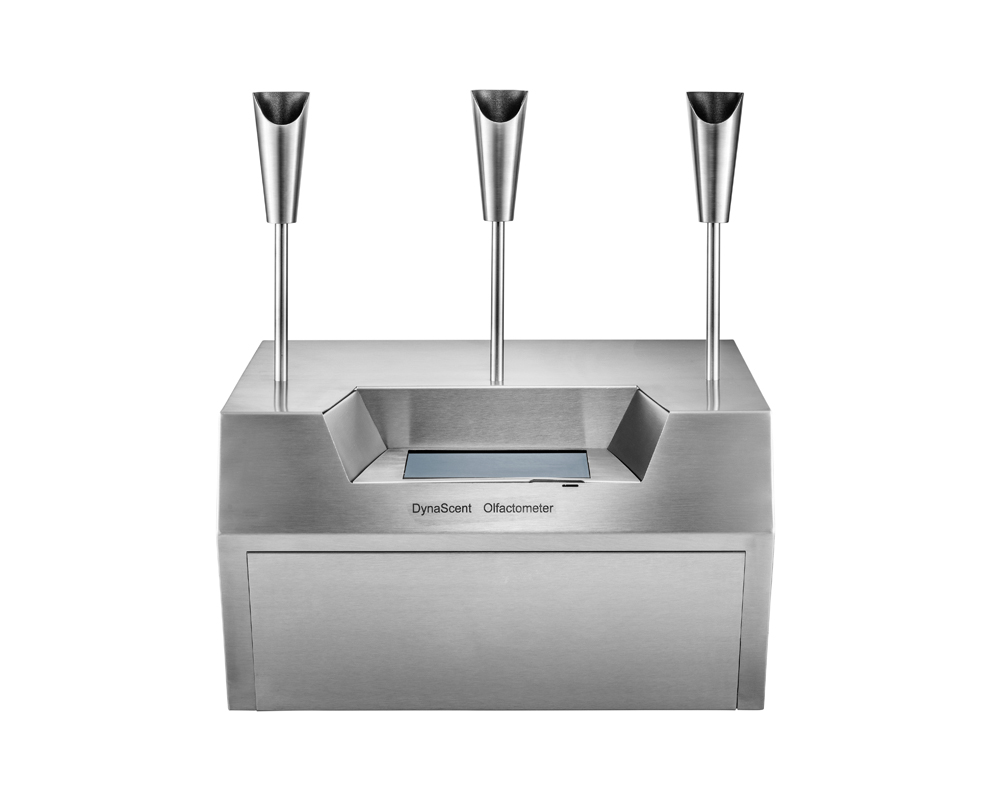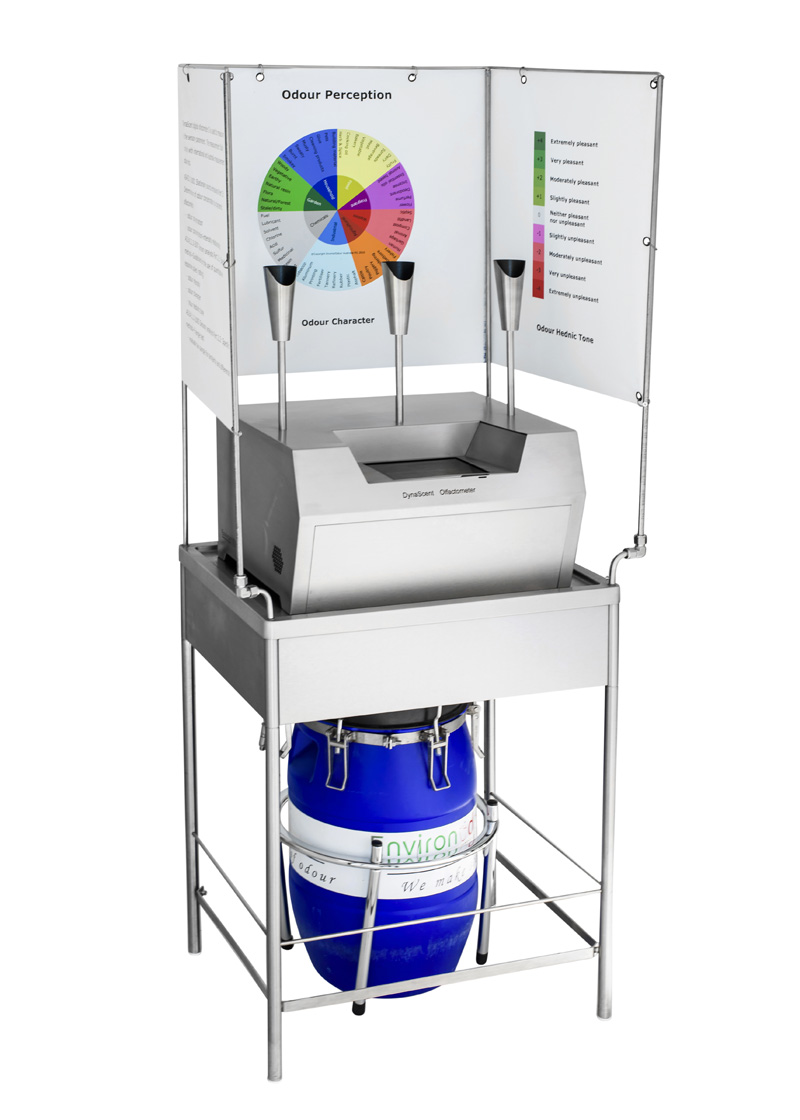Innovative Design
"All men make mistakes, but only wise men learn from their mistakes."
--- Winston Churchill
DynaScent Olfactometer has been designed on the basis of many years of research and development in the field.
As a user of the MFC (Mass Flow Controller)-based olfactometer for nearly ten years, we have found many design deficits of the MFC system. It is essential that a well-designed olfactometer must have the following functions in order to provide any meaningful results. Firstly, the olfactometer can be calibrated and verified for the dilution ratios during normal operation. Secondly, the olfactometer must be cleaned/decontaminated between two sample tests and two dilution series during the same sample testing. Lastly, the olfactometer must have a database to store the thousands of testing results and calibration results.
It became clear from the onset that one way to design the olfactometer was to abandon the technique of “measure to dilute”. This early olfactometer design flaw of placing the flow meters before the gas mixing chamber can actually generate different pressure drops through both the mass flow controllers and gas mixing chamber at different dilution ratios. This in turn could affect the accuracy of the flowrate measurement. Furthermore, the use of mass flow controllers effectively prevents the user to calibrate the olfactometer since the mass flow controllers can not be calibrated by the user.
DynaScent uses a series of precision metering valves to control both sample and odour free air flowrates and allows both gas streams to mix inside a venturi chamber. The metering valves are driven by the corresponding servo motors with an extremely high resolution of ten thousandth of a turn. This ground-breaking design delivers a very steady gas flow to resist any sniffing backpressure. Furthermore, the innovative design eliminates the source of contamination (such as flow meters or mass flow controllers) during the odour measurement. The new system can now be thoroughly flushed with compressed air without the mass flow meter blocking the flow paths.
DynaScent olfactometer also abandons the arrangement of multiple booths. On the surface, it appears that the design of multiple booths can improve the efficiency of odour testing and increase the throughput of sample testing. But this is not the case when other factors such as flow distribution and system cleaning are taken into account. This design requires large amounts of air flow and hence a larger air preparation system. There are some practical problems with the air flow. For example, the mixed air stream flows into different booths, will each booth have the same flow rate of 20 L/min? Will the sniffing process at one of the booths affect the air flow at the rest of the sniffing booths? The biggest question remains – how do we calibrate the dilution ratios while the downstream airflow is split? Technically, these issues could have devastating effects on the performance of the panellist.
"The human nose houses not only the olfactory system but also the somatosensory system, the nerve endings in our noses which are sensitive to temperature, pain etc."
As a result, the improvement in testing efficiency, if any, is at the expense of sacrificing the accuracy and reliability of odour measurement.
DynaScent does not use solenoid valves or pneumatic valves which can increase the air flow temperature at one of the cups.
The most effective approach to minimise the cross-contamination between samples is to reduce the contact area with the sample at all costs. DynaScent is designed with the shortest tubing possible. When the specially polished tubing is selected, the efficiency of the system’s cleaning will significantly improve.
DynaScent olfactometer operating system uses a database management system (Microsoft Access) to store the panellist details, system settings, experimental parameters and testing results. The information system can be used to prepare various tables and reports such as panellist sensory performance, instrumental calibration results and testing reports. The operating system has incorporated many intelligent features. For example, in the event of misjudgement on the starting dilution step, the software is able to abandon the testing series and restart the testing series with a higher dilution step. The system will simultaneously decontaminate the sample tubing and mixing chamber with compressed air.
DynaScent olfactometer is designed and developed by the user for the commercial operation of the dynamic olfactometer.



